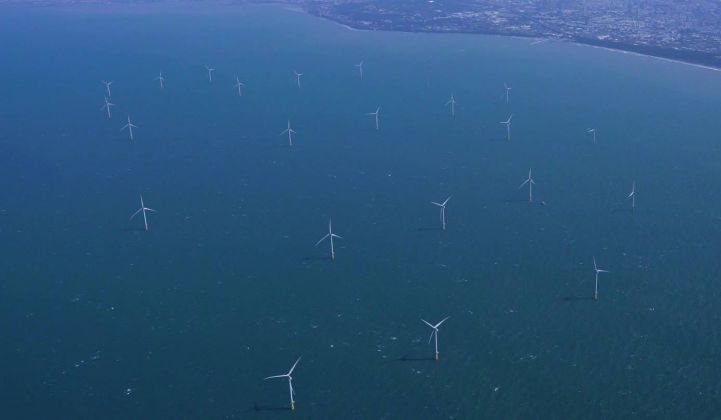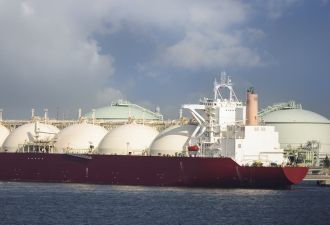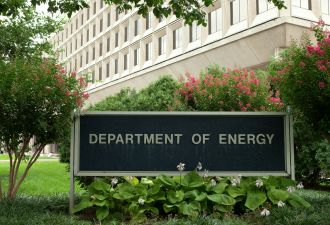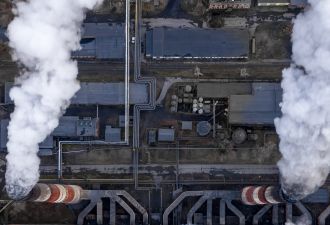Ørsted has signed what it calls the world's largest corporate renewables power-purchase agreement to supply 920 megawatts of offshore wind power to Taiwanese semiconductor manufacturer TSMC, a key supplier to Apple.
The 20-year deal will see the Danish company supplying TSMC with all of the power from its Greater Changhua 2b & 4 offshore wind developments off Taiwan, which has emerged in recent years as one of the world's most important offshore wind markets. The project will be grid-connected in late 2025, with Ørsted hoping to have it fully operational in 2026.
Ørsted’s power-purchase agreement (PPA) breaks new ground for the corporate renewables market. Google last year signed an even bigger 1.6-gigawatt corporate deal, but that covered 18 projects across three continents.
While growing rapidly for both onshore wind and solar, corporate deals for offshore wind have been few and far between, reflecting the technology's higher costs. But growing confidence in offshore wind's capacity factors, along with its attractive generation profile and falling costs, are together drawing more and more interest.
The TSMC deal marks the fourth offshore corporate PPA for Ørsted. The previous three totaled 154 megawatts, making this latest one an outlier. An Ørsted spokesperson said that TSMC, which employs 50,000 people, has particularly large power requirements and is under pressure from customers and regulators to source its energy from renewables. Apple, which buys microchips from TSMC, is one of the world's most aggressive corporate purchasers of renewables.
“Those fundamental drivers are not uncommon in other markets, but obviously a deal of this magnitude will not happen every day," an Ørsted representative said in an email.
However, "considering that we have closed four corporate PPAs in 18 months, and with corporate citizenship gaining still more traction in the renewable energy space, we believe that we’ll continue to see offshore wind corporate PPAs in the 100+ MW class."
TSMC, whose microchip clients extend far beyond Apple, committed last year to supplying all of its electricity with renewables and has challenged its own suppliers to do the same.
The burgeoning Taiwanese offshore wind market
Gary Bills, regional director at the consultancy K2 Management, said there will be many more corporate deals like this as consumer-facing brands continue to clean up their power supplies and face increasing pressure from their customers to do so.
"I don't see any reason why you can't replicate that deal with large end users in other markets," Bills said in an interview. "The trick is to have a large end user that sees the benefit of a 20-year, long-term, secure deal. So maybe if you're in a market where price vulnerability is an issue, for instance."
Importantly, the deal allows Ørsted to better the original auction price for the projects of 2,548 New Taiwanese Dollars per megawatt-hour ($86.57). Ørsted said it will come out ahead anyway: its PPA rate with TSMC plus the value of Taiwanese renewable energy certificates amount to a higher figure than the cleared auction price.
“This improves the project’s financial viability and helps Ørsted mature Greater Changhua 2b & 4 toward a final investment decision,” the company said in a statement. The FID is now expected in 2023.
With Taiwan's mountainous terrain, frequent earthquakes and high land prices limiting the opportunity for onshore renewables, the country is targeting 15.5 gigawatts of offshore wind by 2035 as it phases out its nuclear power plants.
Ørsted operates the 130-megawatt Formosa project in Taiwan and is building the Greater Changhua 1 & 2a offshore wind farms with a total capacity of 900 megawatts, expected to be commissioned by 2022. After a change in government administrations, the feed-in tariff rates attached to the Greater Changhua 1 & 2a projects when they were first awarded in 2018 were cut by around 5.7 percent.
Siemens Gamesa, which is supplying turbines for the Greater Changhua projects, is establishing a nacelle manufacturing facility in Taiwan. The manufacturer is also supplying turbines for the 396-megawatt Formosa 2, being built by Macquarie’s Green Investment Group and Swancor Renewable Energy, and the 300-megawatt Hai Long 2. The latter will use Siemens Gamesa's new giant 15-megawatt turbines.
Ørsted has agreements in place for an operations and maintenance hub at the Port of Taichung and the first Taiwan-flagged service vessel. It also has a megawatt-scale energy storage pilot underway in Taiwan.
Correction: Updated to clarify that Greater Changhua 2b & 4 were awarded a per megawatt-hour price at auction, not a feed-in tariff. The FIT was awarded to Greater Changhua 1 & 2a.




